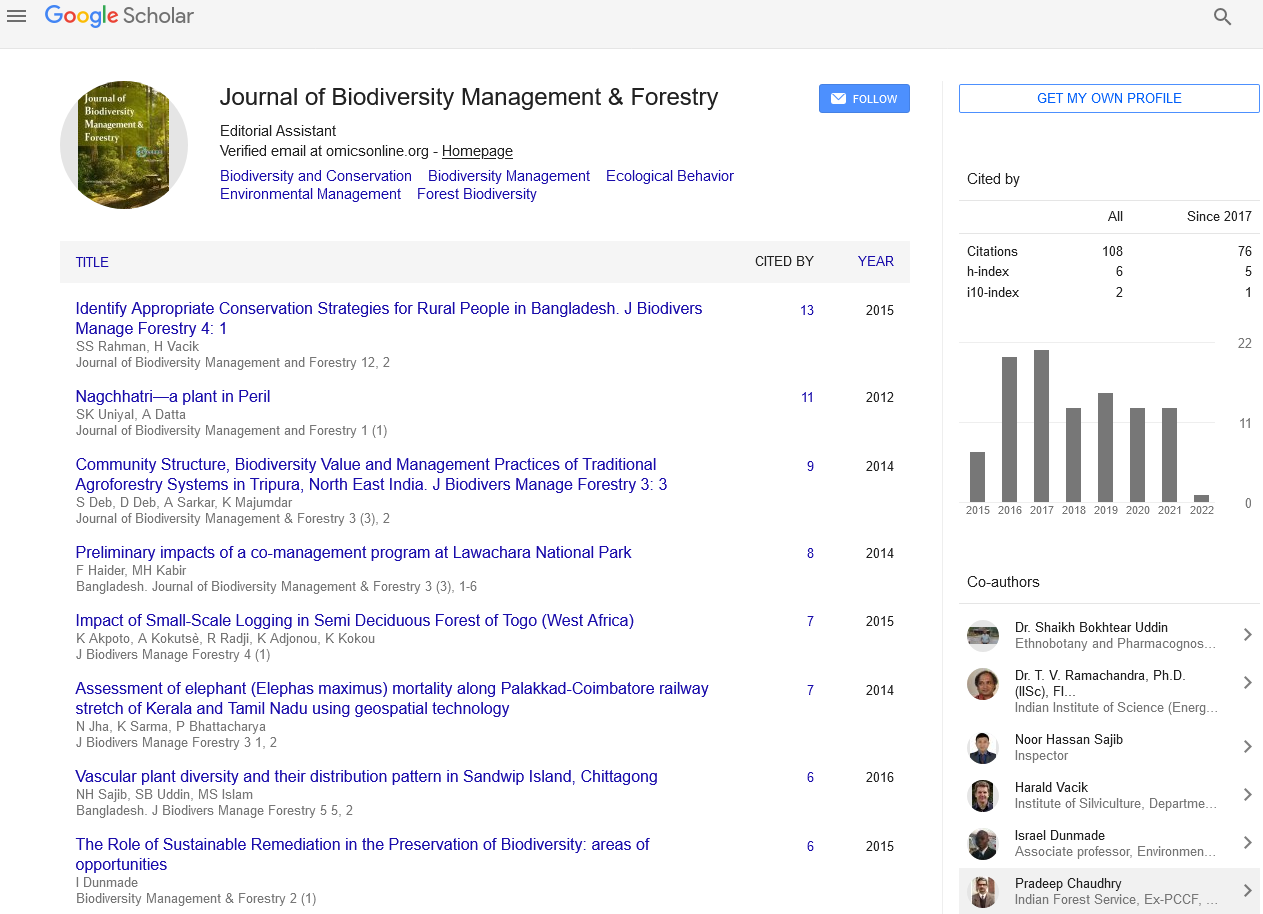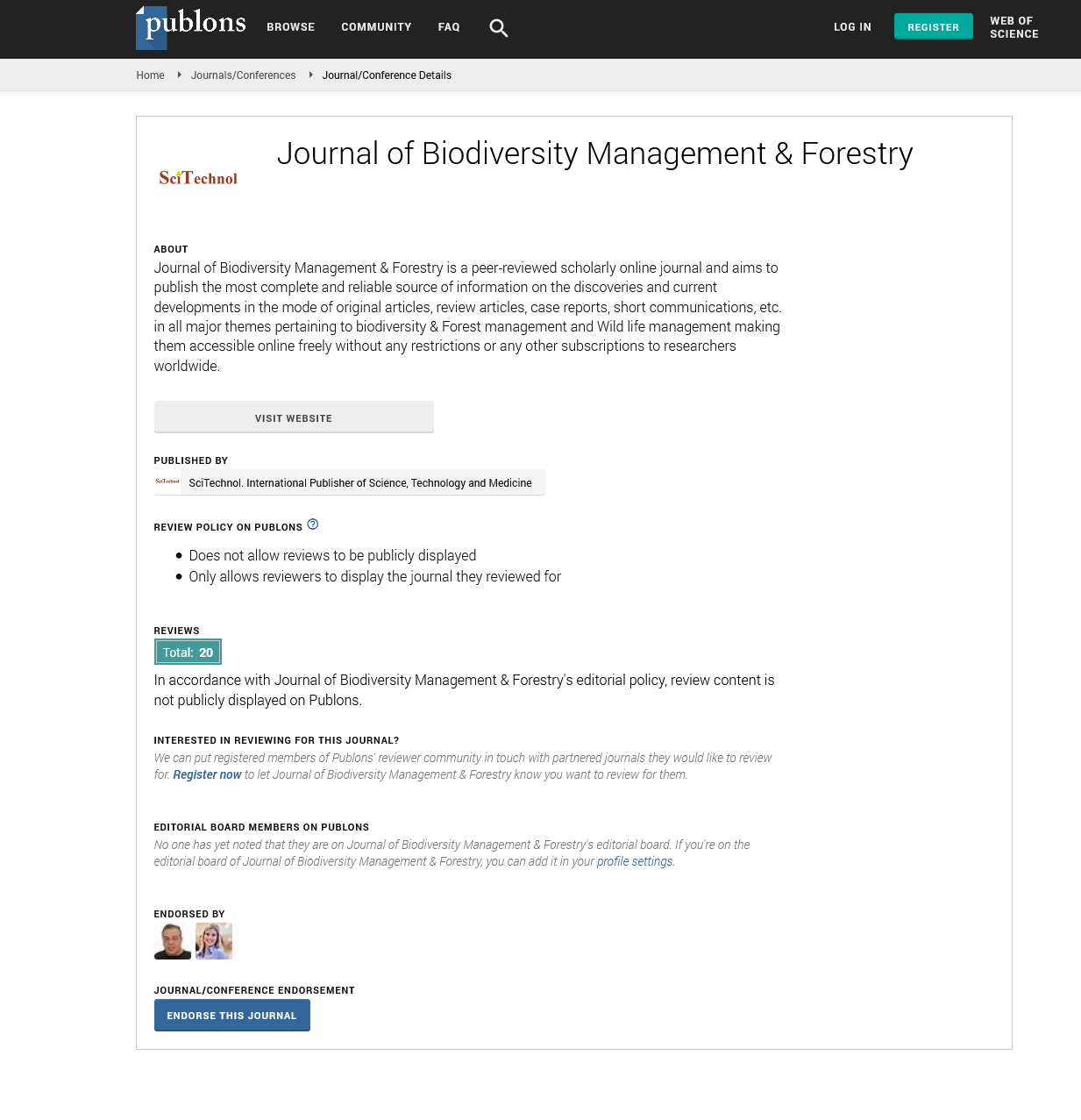Decrease in Brazilian deforestation: What can we expect for the near future?
Bastiaan Reydon
BSc, MSc, PhD, UNICAMP, IGT, Brazil
: J Biodivers Manage Forestry
Abstract
The change from forests to pasture or agricultural land is the largest contributor to the greenhouse gas emissions in Brazil still today. Although Brazil was able to reduce its level of deforestation from 27,000 km2 (2004) to 5,000 km2 (2012), since 2014 deforestation has increased, reaching more than 10,000 km2 in 2021, and decreased since then. There is enough evidence that deforestation occurs mostly on undesignated and unregistered land, as it is used as a speculative asset and/or in a productive way, but the appetite for more land grabbing is still worrisome. Literature shows that the availability of this kind of land in Brazil is between 50 and 100 million hectares, so the risk to perpetuate this pattern and destroy the remaining forests is rather large. This article has as its main aim to see in how far the Amazon deforestation decrease after 2021 is based on the same policies from the period from 2005 to 2012. That was mainly due to a combination of strong command-and-control policies and an institutional setting that was able to enforce it. But most important policies designed for the forest, and the communitiesâ?? protection played an important role, by clarifying property rights and setting responsibilities for the preservation and creating the legal and institutional conditions to enforce the existing legislation. From this perspective, it will be analysed how these different settings affected the decision of players toward deforestation. The first section will show the Amazon deforestation pattern and the link to its causes, mainly the existing policies. The next item will show the legal and institutional instruments that made possible the deforestation reduction at the beginning of the 21st century. The third item will show how the nation clarified the legal rights to land and how it diminished deforestation. The fourth will evidence how those instruments were dismantled, provoking an increase in deforestation. The fifth will analyse the period from 2021 until today. At last, a synthesis will be presented with proposals for recovering previous results.
Biography
Bastiaan Reydon is an Assistant Professor of Industrial Engineering at October University for Modern Sciences and Arts. She earned her PhD degree in Industrial engineering from Alexandria University, Egypt and received a BS and MS degrees in Industrial Engineering from the Arab Academy for Science, Technology & Maritime Transport. Her research interests include supply chain management, sustainability strategies, simulation, modelling and optimization, and agri-food supply chains. Reydon was since 2019 until 2024 a Senior Advisor at Kadaster International, working with Land Administration improvements in Brazil, Colombia, Perú, Mozambique, and Kazakhstan and took part in several projects inside the Kadaster. He is a retired Professor from the Economics Institute from UNICAMP (Campinas, Brazil) where he worked on different fields of economics, from Land Economics to Environment Economics using several types of models. Mr. Reydon, besides obtaining his Doctoral degree at UNICAMP, has done postdoctoral studies at: in Land Management at the University Wisconsin (USA) and ITC - University of Twente (The Netherlands). He has been giving classes at the University of Utrecht, ITC Twente, Leiden on Land Governance and Land Administration. He is also professor at the ICLPST- Taiwan where he teaches a course on Agricultural Economic and Land Governance.
 Spanish
Spanish  Chinese
Chinese  Russian
Russian  German
German  French
French  Japanese
Japanese  Portuguese
Portuguese  Hindi
Hindi 
